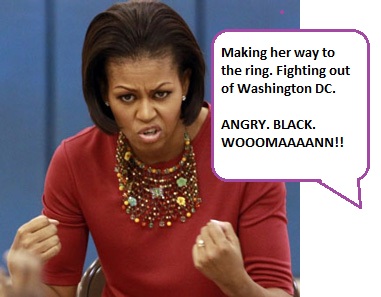March 16, 2012
The headlines about the US newspaper industry have never been so bleak.
In recent weeks, LinkedIn, the networking website, and the Council of Economic Advisers have reported that the press is “America’s fastest-shrinking industry”, measured by jobs lost; the Newspaper Association of America has shown that advertising sales have halved since 2005 and are now at 1984’s level; and the Pew Research Center has found that for every digital ad dollar they earned, they lost $7 in print ads.
As media from television to billboards bounce back from the recession, newsprint is being left behind. Zenith Optimedia this week predicted that internet advertising would pass newspaper advertising next year around the world – but in the US, where internet penetration is high and newspaper audiences are shrinking, digital will overtake newspapers’ and magazines’ combined ad sales this year, eMarketer estimates.
“There’s no doubt we’re going out of business now,” one unnamed executive told Pew’s Project for Excellence in Journalism, which predicted a future of shrinking newsrooms, print deliveries only a few days of the week and more papers closing altogether. A USC Annenberg School study reached the stark conclusion that most printed US dailies would be gone in five years.
Departing executives and bankruptcy advisers have been among the few people making good money from newspapers. The chief executives of Gannett and the New York Times left in recent months with packages worth $37m and $24m respectively, while advisers to Tribune’s Chapter 11 proceedings have earned $233m.
Yet the very pressures on print are also accelerating the pace of change in newspapers’ business models.
On March 5, the Los Angeles Times introduced a “membership programme” that will limit online users to 15 free articles a month. After that, readers must pay a subscription, which is more pricey for digital-only access than for a bundle in which they keep taking the newspaper.
The move followed Gannett’s announcement in February that all 80 of its community newspapers will introduce digital subscriptions, in a move the publisher expects to add $100m to operating profit.
Charging for news online had been seen by many as the preserve of specialist titles, notably financial news brands such as the Financial Times and the Wall Street Journal, but the model has been adopted in recent months by a string of local newspapers such as the Minneapolis Star Tribune to the Memphis Commercial Appeal.
Publishers have focused particularly closely on the New York Times, which began charging for online content a year ago and counted 390,000 digital subscribers by December. Barclays Capital estimated this month that digital subscriptions could add $100m to the group’s annual circulation revenues, more than offsetting an estimated $50m-$60m annual decline in print advertising.
By the end of this year, one in five US newspapers will charge for digital access, according to Ken Doctor, a US news industry analyst. Attitudes towards charging online have undergone “a revolutionary change in the last six months”, adds Steven Brill, co-founder of Press+, a company that has advised 258 media groups on charging for content and is owned by RR Donnelley, the communications company.
Even the business magnate Warren Buffett, a long-time investor in the Washington Post – which does not charge online – has backed digital payments. Sitting in front of the printing presses at the Omaha World-Herald, a local paper he bought last year, he told CNBC last month: “You shouldn’t be giving away a product that you’re trying to sell.”
By putting the same content online for free that they were charging for in print, Berkshire Hathaway’s chairman said newspapers had been competing against themselves. Now, he added, “you’re seeing throughout the industry a reaction to that problem and an answer to it”.
Advocates such as Press+ say that publishers that have adopted “metered” models allowing free access to a limited number of articles have not seen the loss in online advertising revenues many feared. Such models have “somewhat shored up print” circulation, adds Alan Mutter, a newspaper analyst and blogger.
But the industry is far from agreeing on a single model. “Fifteen years into the digital transition, executives still feel they are in the early stages of figuring out how to proceed,” Pew found.
Caroline Little, chief executive of the Newspaper Association of America, says: “I don’t think there is one silver bullet. I think paywalls are helping.” Her job is not to preserve print, she adds. “The preservation of journalism is what’s important. Print will continue to decline.”
Newspapers were collaborating more to find solutions such as Newsright, an initiative to enable easy rights clearance for websites republishing news content online, Ms Little says. Others are sharing costs, analyst and blogger Mr Mutter says, pointing to the fact that the Chicago Tribune now prints and distributes the rival Chicago Sun-Times.
Online advertising remains the core of most newspapers’ digital businesses, but growth has been anaemic compared with digital native companies. Mr Mutter notes that US newspapers’ digital advertising sales were less than those of the “adolescent” but targeted ads – which are placed to reach a specific audience – on Facebook in 2011.
Some, however, are bucking the trend, finding success selling targeted digital advertising or building consulting businesses to help confused local businesses navigate the intricacies of search engine optimisation, digital ad platforms and daily deal sites. Tablet editions and smartphone apps are also encouraging some to charge for content on mobile devices after years of giving content away for free.
Warnings of newspapers’ demise were common three years ago, after the closure of the Rocky Mountain News and the Seattle Post-Intelligencer’s decision to end its print edition, but few large newspapers have closed since.
That is thanks to the high margins many enjoyed in the decades where they had a grip on classified and automotive advertising, Mr Mutter says. He adds: “Most newspapers continue to be profitable, just not as profitable as they used to be.” Their typical double-digit profit margins “are quite good compared with Walmart or Amazon”, he says.
According to Mr Buffett, newspapers also still have some unique content to draw readers in, from sports to local politics. He added: “Obituaries are a good thing. You’re not going to find out whether your friends are alive or dead any place else.”



































